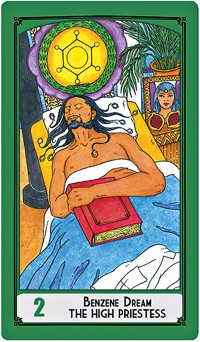Advertisement
Grab your lab coat. Let's get started
Welcome!
Welcome!
Create an account below to get 6 C&EN articles per month, receive newsletters and more - all free.
It seems this is your first time logging in online. Please enter the following information to continue.
As an ACS member you automatically get access to this site. All we need is few more details to create your reading experience.
Not you? Sign in with a different account.
Not you? Sign in with a different account.
ERROR 1
ERROR 1
ERROR 2
ERROR 2
ERROR 2
ERROR 2
ERROR 2
Password and Confirm password must match.
If you have an ACS member number, please enter it here so we can link this account to your membership. (optional)
ERROR 2
ACS values your privacy. By submitting your information, you are gaining access to C&EN and subscribing to our weekly newsletter. We use the information you provide to make your reading experience better, and we will never sell your data to third party members.
Food Ingredients
Newscripts
Mixology science and moon-themed mocktails
by Jonathan Forney
July 23, 2023
| A version of this story appeared in
Volume 101, Issue 24

Building better beverages at the bar
Making a cocktail someone will love is a delicate balancing act. How sweet is too sweet? Should it be bitter? Shaken, stirred, or strained? As it turns out, there are some scientific rules of thumb that anyone can apply—from party host to professional bartender—to take their drink ideas to the next level.
“For every style of cocktail, I have specific ratios that I’m shooting for,” says Dave Arnold, host of the podcast Cooking Issues and author of Liquid Intelligence: The Art and Science of the Perfect Cocktail. Arnold tells Newscripts that the key to a good cocktail is finding the right balance of acid, sugar, alcohol, and dilution.
For acid, lemon and lime—especially lime and its slightly lower citric acid content—are great places to start, Arnold says. Citrus juices have an ability to add texture to drinks, which is why they’re common in cocktails containing whiskey and similar spirits. If someone wants to minimize citrus flavors, Arnold suggests using something more grape-flavored, thereby swapping citric acid for tartaric acid.
Sugar can be introduced to drinks in many ways. A typical method is by adding juice. Pineapple juice, for example, pulls triple duty in a cocktail by working as a foaming agent, diluting ingredient with its relatively high water content, as a sugar, and adding texture. Another way to provide extra texture is carbonation. The added carbon dioxide can keep shaken beverages from feeling flat or listless. Cocktail bars often have custom simple syrups, which they make by combining fruit and sugar to form a concentrate that adds sweetness and flavor.
Arnold says that when combining ingredients in a shaker, it’s important to remember that “all the sugar, acid, and nonspirit you want to add should be around 1.5 oz [44.3 mL], because you add ice.” That ice ends up supplying most of the dilution in a shaken drink, so barkeeps have to account for the added water in the base recipe or a drink will taste watered-down.
Lastly, Arnold says that when they’re building beverages, drink designers should consider how flavors interact. Not every spirit needs something sweet or acidic on the back end if that would interfere with the base flavoring. Does your favorite drink recipe stack up to these ratio guidelines? Send them in to Newscripts for . . . quality assurance. Cheers!
Out-of-this-world mocktails

The European Space Agency (ESA) held its Space Juice competition in January this year. The mocktail-making contest is themed around the agency’s new interplanetary spacecraft, Jupiter Icy Moons Explorer, or Juice. It was launched in April to gather information on three of Jupiter’s moons: Ganymede, Callisto, and Europa.
Participants were encouraged to be creative and use Jupiter’s swirling gas clouds and the deep oceans of its moons when designing their drinks. Dozens of submissions came in from across Europe. Some included small satellite garnishes. Others used cotton candy to simulate gas clouds. One submission glowed in the dark. Another was layered to mimic Jupiter itself.
Margherita Gagnoni, of Italy, took first place with a sparkling blue mocktail made from tonic water, coconut water, ginger ale, apple juice, and spirulina, a type of algae, used to hint at possible life in the far-off oceans. Gagnoni attended the ESA’s launch event in Germany—where her winning drink was served.
The nine highest-placing entrants received a goody bag from the ESA with Juice-themed prizes. All 70 recipes submitted have been combined into a digital recipe book for the spacecraft’s launch.
Please send comments and suggestions to newscripts@acs.org.





Join the conversation
Contact the reporter
Submit a Letter to the Editor for publication
Engage with us on Twitter